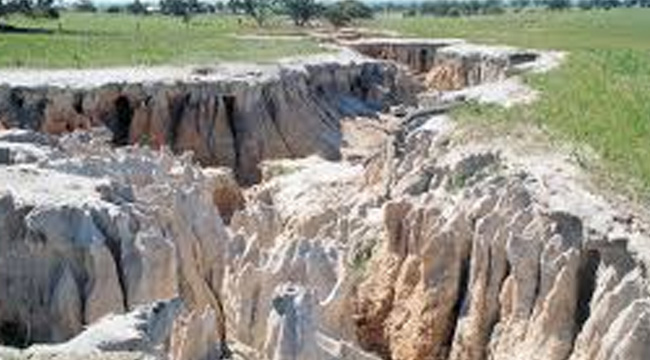What Are The Types Of Water Erosion? Causes Of Soil Erosion
TYPES OF WATER EROSION – In this topic, we will now learn and identify the following types of water erosion.

Soil erosion is an action or process which involves the removal of soil, rock, or dissolved material from one place from the crust to the other.
One of its factors is water, hence, the removal of soil via water is called water erosion. Water, however, comes in many forms. Here are the following:
Types
- Rain and Overland Flow
- The first form is rain and its aftermath, the overland flow or surface runoff. This result in the four kinds:
- Splash erosion
- occurs when the impact from raindrop creates a small crater in the soil, thus, ejecting particles.
- Sheet erosion
- the result of overland flow. When the flow gains enough flow energy, it can lossen and transport sheets of soil particles
- Rill erosion
- it is the development of small, ephemeral concentrated flow paths which function as both sediment source and sediment delivery systems for erosion on hillslopes.
- Gully erosion
- happens when runoff water gathers together and rapidly flows in narrow channels during or immediately after heavy rains or melting snow, removing soil to a considerable depth.
- Splash erosion
- The first form is rain and its aftermath, the overland flow or surface runoff. This result in the four kinds:
- Rivers and Streams
- This erosion was caused by continued water flow along a linear feature. It is both downward and headward. It comes in two forms:
- Bank erosion
- the wearing away of banks of a stream or river.
- Thermal erosion
- the aftermath of melting and weakening permafrost due to moving water
- Bank erosion
- This erosion was caused by continued water flow along a linear feature. It is both downward and headward. It comes in two forms:
- Coastal erosion
- Also known as shoreline erosion, this occurs on both exposed and sheltered coasts, primarily occurs through the action of currents and waves. Sea level can also be a factor to this kind of erosion.
- Floods
- This is the extreme form of water erosion. The large volumes of rapidly rushing water could cause kolks or vortexes, which could cause extreme local erosion, plucking bedrock and creating rock-cut basins.
